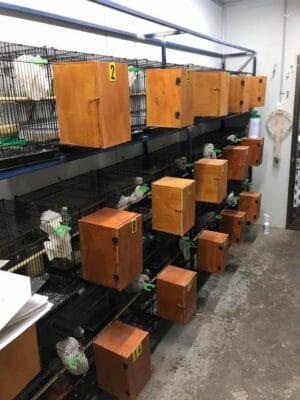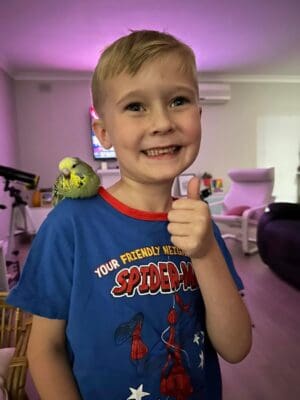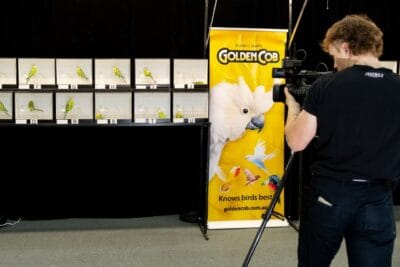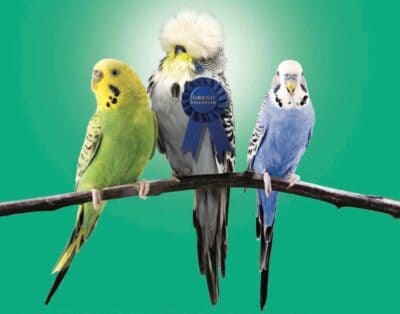
Budgie Bird – Your Complete Guide to Budgies
Welcome to the ultimate guide to budgie birds by the Budgerigar Council of South Australia. Whether you’re a first-time bird owner or an experienced bird enthusiast, this comprehensive guide will provide you with all the essential information you need about these wonderful pets, also known as budgerigars. These charming, colorful birds are among the most popular pets worldwide, ranking just behind dogs and cats in terms of popularity.
The budgie bird (or budgerigar) is a friendly and affectionate companion that has captured the hearts of many. Known for their playful personalities and ability to mimic human speech, budgies make delightful pets. In this guide, we will cover everything from their care and diet to training and breeding tips, ensuring that you have all the knowledge needed to give your bird the best life possible.
What Makes Budgie Birds Great Pets?
Originating from the wilds of Australia, budgie birds are small parrots with vibrant colors and sociable personalities. Budgies are known for their intelligence, social behavior, and ability to bond closely with their human companions. While they are often referred to by their common name, budgies, they are formally known as Melopsittacus undulatus.
Budgies are not the smallest parrots (that title goes to the parrotlet), but they are still relatively small, typically measuring 7 to 8 inches from beak to tail tip in captivity. In the wild, budgies can be even smaller. These birds are often mistaken for other types of parakeets, but unlike larger parakeet species like the Indian ringneck, budgie birds are more compact and better suited to small living spaces.
Budgie Bird Characteristics
Budgie birds are small, colorful, and full of personality. They come in a variety of color mutations, ranging from the wild green and yellow to blue, violet, and even ino variants. Budgies are highly intelligent birds capable of learning a large vocabulary, and many owners enjoy teaching their budgie birds to mimic words and simple phrases.
One of the major advantages of owning a budgie bird is their relatively low maintenance compared to other pets. They require minimal space, making them ideal for small homes or apartments. Additionally, their cost of care is quite affordable. Budgies are a perfect option for those looking for an interactive, budget-friendly pet.
How to Care for Your Budgie Bird
Providing quality care is essential to keeping your pet happy and healthy. Moreover, here are a few key aspects of budgie bird care:
- Housing: Budgie birds require a spacious cage with horizontal bars to encourage climbing and exercise. A large cage will allow them to move freely, and regular out-of-cage time in a safe environment is crucial for their mental and physical health.
- Diet: Budgies thrive on a balanced diet that includes high-quality seeds, millet sprays, fresh vegetables, and fruits. Regularly clean their food and water dishes to prevent contamination and illness. Budgerigars are particularly susceptible to mould.
- Mental Stimulation: As intelligent birds, budgies need mental stimulation. Provide them with toys, and rotate them regularly to keep your budgie entertained and engaged. Regular interaction with human family members is also important for their social well-being.
- Veterinary Care: Routine check-ups with an avian vet will help ensure your budgie bird stays healthy. Like all pets, budgies need regular attention to their health to avoid common issues such as respiratory infections or parasites.
What Do Budgies Eat?
A well-balanced diet is key to the health of your budgie bird. Their diet should include:
- High-quality seeds (without artificial additives)
- Millet sprays
- Fresh vegetables like carrots, spinach, and broccoli
- Fresh water – always ensure your pet has access to clean water, as dirty water can lead to illnesses.
- When feeding your budgie bird, it’s crucial to avoid “spoiled seed,” which can lead to poor health and breeding outcomes. Seed age, moisture content, and cleanliness are all important factors to consider. Wet seed, and birds, dont generally mix well.
How to Breed Budgies
Breeding budgies can be a rewarding experience, but it requires careful preparation. Here are some steps for successful budgie bird breeding:
- Choose the right environment: Budgies need a safe, clean, and spacious environment to breed. Ensure the breeding cage is equipped with proper nesting materials and is large enough to accommodate the pair of birds.
- Monitor the breeding process: The breeding cycle involves courtship, mating, egg-laying, and chick rearing. Understanding each phase is essential for successful breeding.
By following these steps and providing the right care, your budgie birds will be more likely to reproduce successfully.

Training Your Budgie Birds
With patience and consistency, you can train your budgie bird to perform various tricks, such as learning their name, mimicking speech, or performing simple behaviors like flying to your hand. Budgies are among the best parrots for mimicking human speech and can learn a variety of words and phrases, sometimes using them in the correct context.
Training a budgie bird can be a fun and rewarding experience for both you and your bird. To that end, start with short training sessions and be patient as your budgie learns. Consistent interaction and positive reinforcement will help your feathered friend become an excellent talker and companion.

Conclusion
Budgie birds are fantastic pets that bring joy, color, and companionship into your home. They are small, intelligent, and affectionate, making them a great choice for families and individuals alike. By understanding their care needs and providing the right environment, you can ensure that your pet lives a long, healthy, and happy life.
For more information about budgerigars, their care, breeding, and training, explore our additional resources and guides. Finally, be sure to follow us on Facebook and stay updated on the latest news from the Budgerigar Council of South Australia!
Budgie Bird FAQS
1. How do you take care of a budgie bird?
Taking care of a budgerigar requires attention to its environment, diet, and social needs. First, provide your budgie bird with a spacious cage that allows plenty of room for flying and climbing. Next, add toys and perches to keep your budgie bird mentally and physically active. Additionally, clean the cage regularly to maintain hygiene and prevent illness in your budgerigar . Importantly, budgerigars thrive on social interaction, so spend time talking or playing with your budgie bird daily. Finally, ensure your budgie bird has access to fresh water and a balanced diet to stay healthy and happy.
2. What do budgie birds eat and what is their diet?
Budgerigars eat a variety of foods that support their health and energy. Primarily, a budgerigar enjoys a mix of high-quality seed blends specially designed for budgie birds. However, incorporating fresh fruits and vegetables like spinach, carrots, and apples adds essential vitamins and minerals for your budgerigar . Moreover, providing cuttlebone or mineral blocks helps maintain strong beaks and bones in budgie birds. Avoid giving budgerigars foods that are toxic to birds, such as avocado, chocolate, or caffeine. By offering a diverse diet, you help your them stay vibrant and energetic.

Keen to join a budgie club? For more info, click here.


